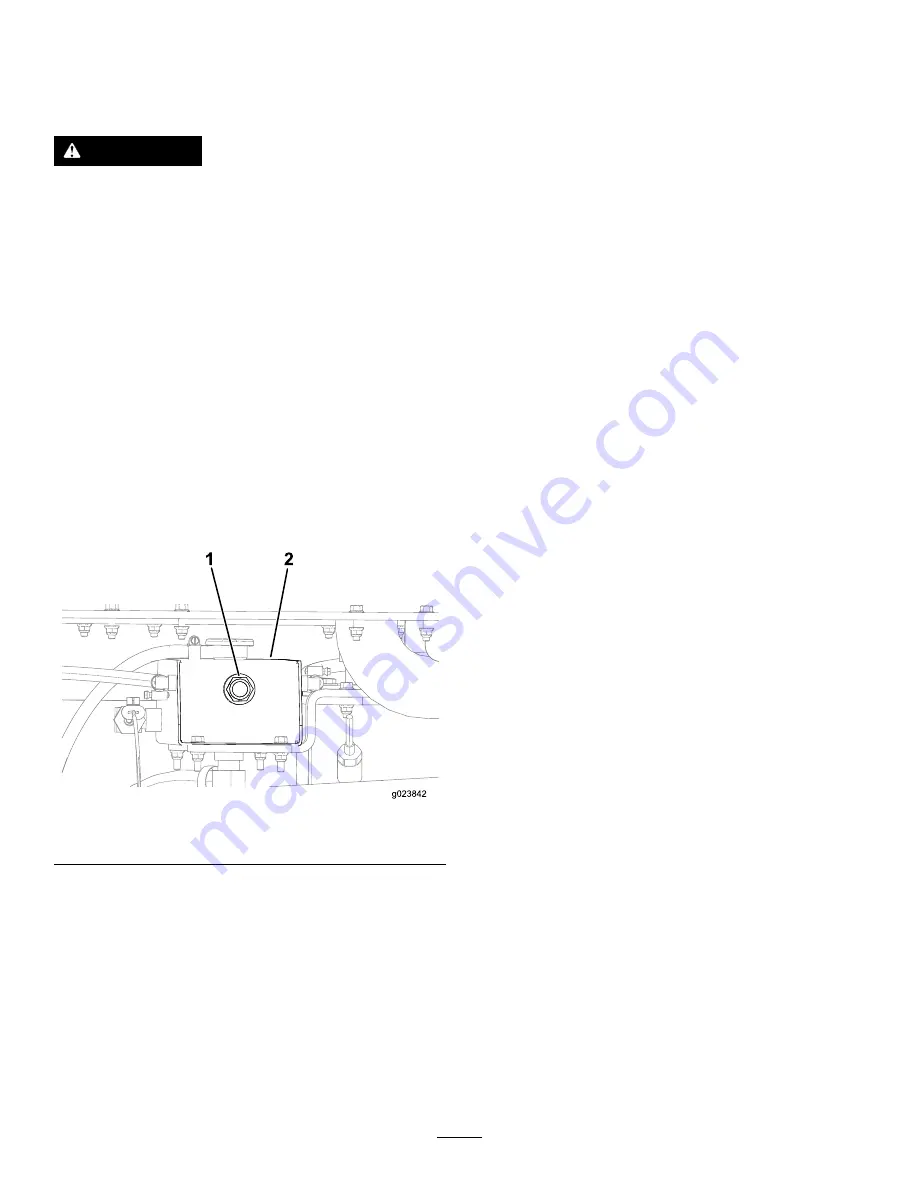
Checking the Coolant Level in
the Radiator
Service Interval:
Before each use or daily
WARNING
If the engine has been running, the radiator will be
pressurized and the coolant inside will be hot. If
you remove the cap, coolant may spray out, causing
severe burns.
Do not remove the radiator cap when the engine is
hot. Allow the engine to cool for at least 15 minutes
or until the radiator cap is cool enough to touch
without burning your hand.
Note:
The cooling system is filled with a 50/50 solution of
water and ethylene-glycol antifreeze.
1.
Park the machine on a level surface, stop the engine,
and remove the ignition key.
2.
Allow the engine to cool.
3.
Open the rear-access door.
4.
Check the coolant level by looking at the sight gauge at
the end of the radiator tank (
Figure 140
1.
Coolant tank sight gauge
2.
End of the radiator tank
•
If the coolant level is low, add coolant until the
level is up to the bottom of the filler neck; refer to
Filling the System with Coolant (page 103)
.
Important:
Do not overfill the radiator.
•
If the coolant level is normal, close the rear-access
door.
Checking the Condition of
Cooling-system Components
Service Interval:
Every 300 hours/Yearly (whichever comes
first)
Check the condition of the cooling system for leaks, damage,
dirt, and loose hoses and clamps. Clean, repair, tighten, and
replace the components as necessary.
Checking the Concentration of
the Coolant
Service Interval:
Every 1,000 hours/Yearly (whichever
comes first)—Check the concentration
of the coolant before the winter season.
Test the concentration of ethylene glycol-based antifreeze
in the coolant. Ensure that the coolant has a 50% ethylene
glycol and 50% water mixture or equivalent.
Note:
A 50% ethylene glycol and 50% water mixture will
protect the engine to -37° C (-34° F) throughout the year.
Using a concentration tester, check the concentration of
the coolant mixture to ensure that it is 50% ethylene glycol
and 50% water or equivalent; refer to the manufacturer’s
instructions for testing.
Cleaning the Cooling System
Service Interval:
Every 1,000 hours/Yearly (whichever
comes first) (Clean the cooling system
if the coolant becomes dirty or rust
colored.)
101






























